It’s been a while..
Since the last time, I have begun to develop playable prototype using Unreal Engine. In the C64 side, the reworked bitmap scroller, along with Sprite multiplexer has existed for over a year already. Sami Louko has also contributed some SID sound effects as well as pretty nice 1-channel music, which has been recorded as WAV file to be used in the unreal prototype.

So, this blog post should be about game design, as making a prototype is where I have to put into practice all my thoughts about the game design aspect of the Undead and test all my ideas and animations. In the end of the post, I will also talk a little bit about implementing the prototype on Unreal and address a public “Thank you” to Remedy Entertainment. In future blog posts, I may be talking more about game design / balancing or about the C64 conversion, as we are planning to have playable demo converted to C64 from Unreal by late 2024.
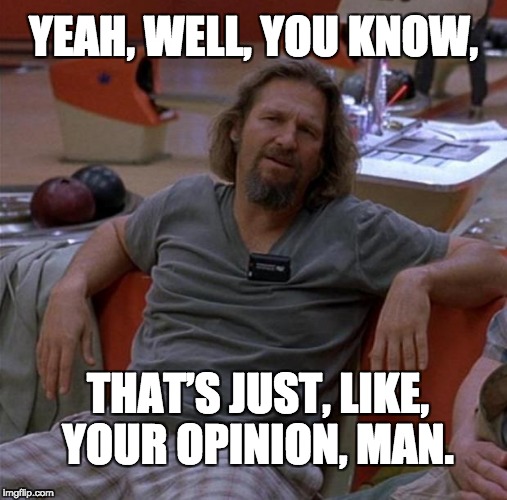
Please be advised that the thoughts I share here about game design are my own personal perceptions and preferences, thought processes modified to suit a project like Undead. You may not agree with them, and even if you did, they may not suit your own project or your own preferences or needs anyway. Because unlike some people would like you to believe, game design is highly subjective area of expertise, and there is no single set of thought process you could blanket apply everywhere. It all boils down to what you are making, who is your audience, who pays for the production, what platform, what genre, what is your team like, how much resources you have, etc. Even if you had all that figured out, you would still have to often adjust everything on the fly to suit the needs and realities of your project. People who claim to you that “you have always do thing [x] so that the game is good” are usually just looking at the things on the surface and applying their own limited range of thought and projecting their own narrow imagination. So, my thought processes about game design are largely related to Undead and it’s needs, and may not apply to other game projects at all, even if it would look like so. It may not be useful to you at all, and it is not intended to do anything else than maybe satisfy your curiosity and entertain you. So don’t come complaining if you listened to me and all went wrong – I warned you 🙂
- Looking at something old and I can’t find my rose tinted glasses
Undead began on 1990 and was abandoned in 1992. This means I have had long time to think about it – what would I do to it in the light of my current knowledge.
Many people making or talking about “retro” games today seem to sometimes misunderstand few things about old classics; things that are impossible to know unless you were there, or unless you listen to some of the old developers. Old games almost never ended up being what was originally intended. The end result was ALWAYS an extreme compromise on multiple fronts. This is because the limits of the hardware always hit you in the face. In our imaginations, we always envisioned more details, more features, more definition, more animation frames, more playability, more interaction.
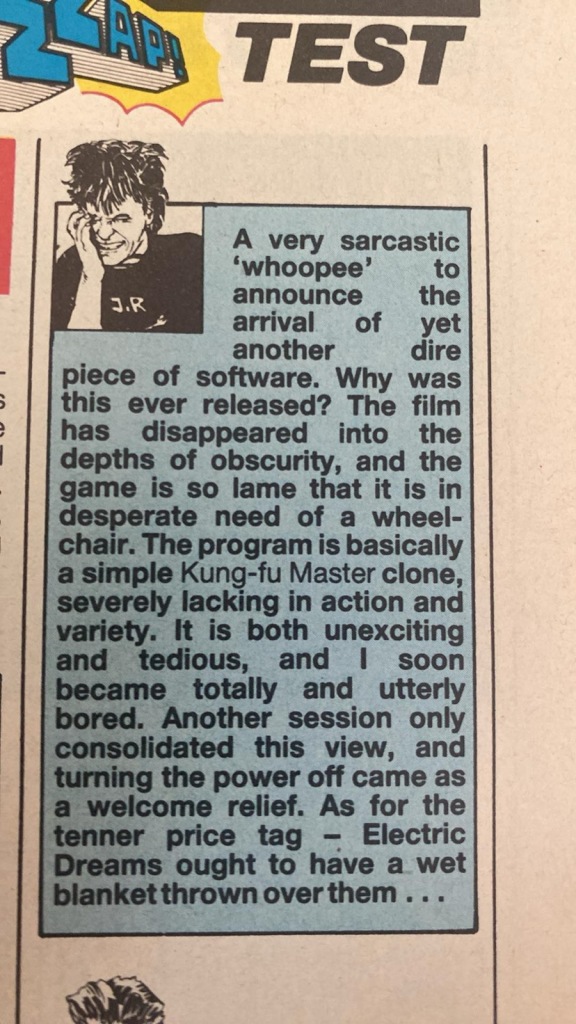
I hope we can do better than this game.
Obviously now, we know (or should know) by now why some of the best old arcade games work so well; instead of trying to do many things in mediocre way, they did usually just one thing, and did it really well. This makes many of the 80’s game reviews also amusing to read; as many things we now know to appreciate were not often kindly looked at, but rather seen as “limited”.
With Undead, I of course wanted to play a game that would feel like Romero movie or John Carpenter movie. But in reality, I was too young and inexperienced to possibly figure out how it should play, so instead I just proceeded to carbon copy my favorite coin ops. Like a kid in a candy store, I behaved like a producer from typical game publisher, demanding this and this and this feature, with little thought on how it would sit in the whole package or how it would affect development time or resources. This eventually killed the project. But, we did make a good, solid fun demo (I think, but I am obviously biased).
When restarting the game project in 2020, I went through my head everything that we had at that point, and thought what I could do better. I also had a look at belt scrollers of the time and how they were today.
The Kung-Fu Master / Vigilante style belt scroller actually pretty much gave way to Final Fight style belt scrollers with vertical movement (that had more room for crowd control mechanics and multiplayer), or morphed into 1 vs 1 Street Fighter style games, and never looked back. So there was not much to look at.
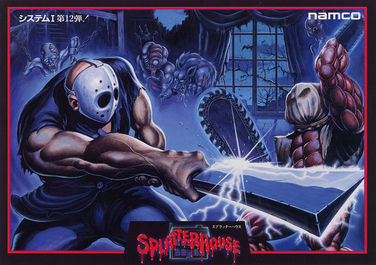
I also had, for a first time, a critical look at Splatterhouse (I own the coin-op) which is something I’ve never done before. I had to face it for what it is: there is not really too much game to look at – you travel forward, kill enemies, try to stay alive, and that’s that. Most of the charm of Splatterhouse comes from the large animated graphics (they really went to town with the gory details) and atmospheric audio and voice samples. There are some branching paths that add replayability, but only on few places. So, what did we have was: 1) large graphics 2) gory details and animation 3) sound samples. Thanks to our streaming graphics, we can have only one of these selling points on the C64 version of Undead, that is, gory details and animation. That’s 1 out of 3. It’s something, but I wouldn’t really want to tout it out as a second coming of cheesus. I have to be honest with myself.
Also, Splatterhouse did one thing quite well that not many arcade games did back in the day; it told you a story. Albeit a very cliched one with the typical damsel in distress, that would not feel very fresh today, although it did have one twist: your girlfriend turns into a kind of inside-out frankenstein monster and you will have to kill her, resulting in rather downbeat ending (which they of course reversed in Splatterhouse 2..bah) But, it was told in rather “cinematic” way – compared to what we used to have back in 1988.
Please, understand that back in 80’s NOTHING was cooler or more desirable than a
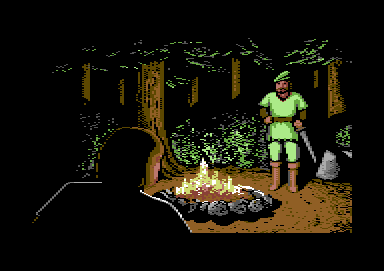
notion of our games as interactive movies. Animated intros were appreciated and cutscenes felt like a luxury. Then Hideo Kojima and 100 hours of rambling cutscenes happened. Oh how the times have changed. These days, any cutscene or animated intro in a game feels like punishment, I hate them, I don’t want to be forcibly subjected into a single second of some boring, pretentious, cliched irrelevant by-the-numbers story with zero imagination or character, by some design-by-committee-and creamed-over-by-consulting-contractor or listen to hours and hours of worthless dialogue that provide almost zero difference to what I do in most of those anyway: run from point A to point B, kill enemies, pick something up. Which is EXACTLY THE SAME THING WE DID IN GAMES ALREADY MORE THAN 30 YEARS AGO. This being said, I admit that there has been *some* games that have had good storytelling, but it seems to be more of an exception than a norm.
So, take away dated concept of telling a story that no one is interested to hear in 2024, take away large graphics with lot of colors, and take away digitized speech, and what do we have? A belt scroller where you move from point A to point B, kill enemies, earn points and pick something up on the way. But, we DO have lots of animation and we CAN have lots of gory details, thanks to our streaming data from cartridge.
So, looking at this, I had to figure out that is there any way I can make this at least somewhat fun, so that I would not lose all my credibility as a game designer. If I had ever any in the first place – I never managed to find funding for any of my game projects and I never got to work as game design lead for full project cycle due to this. So my reputation as a game designer can be easily disputed, as it’s limited only to fleeting passes of appreciation of the few select people who worked with me in the past. I am also not one of those people who want to make noise about games on social media daily about games, just to draw attention to my “amazing design knowledge” (ugh). Although, if you want, you could label this blog as one, although this really is just a blog post about hobby project for Commodore 64.
- Everybody steals, but is it theft if idea alone is worthless?
Most of the developers and publishers through the history of the game industry usually like to throw the word “original” around, as if it had some actual meaning you should care about. They sound almost as “plausible” as politicians. Most of the time, the word is just empty noise, distraction or outright deceit. Since games were originally conceived, everyone has been stealing ideas from everyone and everything. Popular movies and trends are cannibalized in the moment they appear. No one invents anything culturally meaningful or fresh through games (most of the time). But this has zero meaning.
This is because when in game development, what player or audience perceives as an “idea”, is actually a small tip of the iceberg. The actual elephant of the room that is never addressed is how you implement it. Too many people didn’t understand it back in the day, and too many people don’t understand it now. Every gameplay idea, let’s just say something as simple as “character jumps on the platform” contains a vast amount of invisible work that is not obvious or apparent to the player, but it has to be implemented to get that “good feel” for the gameplay, and also communicate intended experience in most meaningful way that still co operates within the existing game systems and mechanics rather than fighting against them.
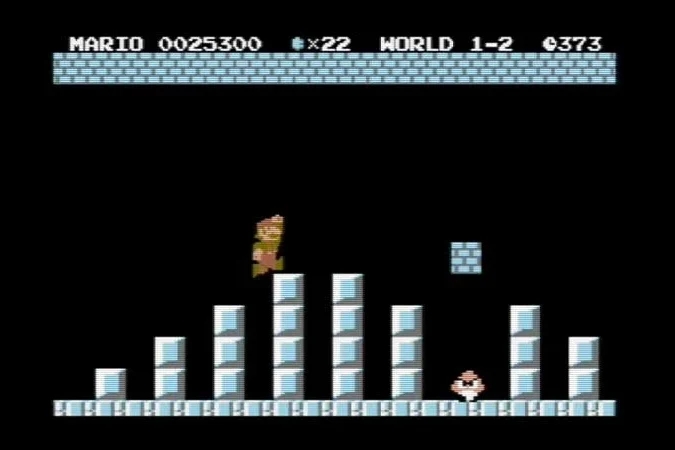
The most obvious example of how implementation matters is Super Mario Bros. It was copied to death back in the 80’s and 90’s (and before that you had trillion platform games trying everything while copying each other, badly) but almost never as successfully reproduced. Many salty developers liked to downplay (I have seen this) this down to Nintendo’s bullying business tactics (which is true to some extent, but Nintendo is not the only bully) or “brainwashing gamers” with brands (which has some truth in it, but show me a gamer whose brain wasn’t melted by ecstasy of gaming when they were kids). Shigery Miyamoto said on old interview (I don’t have a source, since it was more than 20 years ago when I read it, it may have been The Edge magazine) that Nintendo’s competitors always just try to copy the surface, rather than really trying to figure out how their games work under the hood. When Super Mario Bros was finally converted to C64, it’s developer mentioned in the discussion forum how there is a “massive, surprising amount of code dictating the physics and controls of the main character” that gave the game it’s good control and feel. This is one good example of the vast amount of implementation that is mostly invisible to the person who looks and plays the game, but it gives that magical “feeling” which is actually more than you being hypnotized by the Nintendo logo.
(As a side note, put this knowledge against this the notion of “idea people”. Everyone knows one. “Idea people” are the kind of people who don’t know how to implement things, but they still think that they should be working on games, because “they have good ideas”. These people have been source of contention for so long in game industry now that it has practically turned into a slightly tasteless meme.)
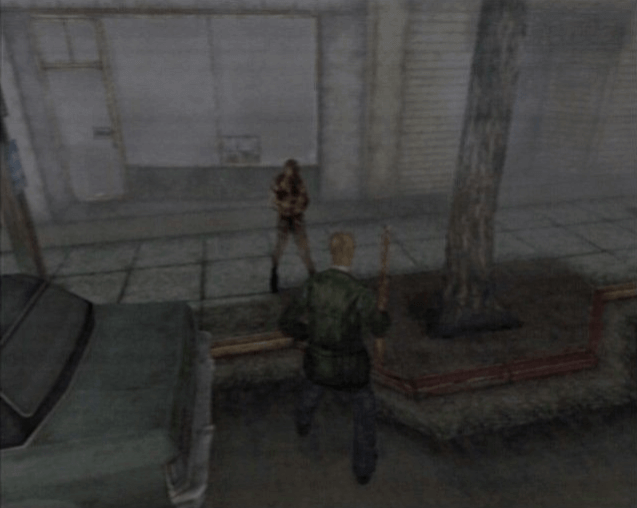
In my opinion, game writers are rarely that much better (though I know some game writers who are good people). But I do understand that in today’s large projects, not many people have the time to sit down to write all that trite dialogue, and there are audiences who actually DO play games just because for their stories (who am I to judge them, some people used to watch reality TV). But just to make clear where I stand: it is mostly likely that I may not give a whirling flying hoot about your game ideas, or your game story.. or mine for that matter.
Where does all this ranting leave me? It addresses the fact that there is nothing original in Undead; everything there is something I have stolen from other games. And it does not matter. What matters is can I implement what I stole into a meaningful game and execute it so that someone in today’s world could find meaningful entertainment from it for at least for a short while. It also gives me focus, where I should put most of my time and energy: providing meaningful arcade belt scroller experience rather than trying to reinvent the genre or provide “subversive” (ugh) story.
- Are you able to look at things for what they really are?
So, how does one navigate when you sit down and think what I have to do in order to make this game fun? I have limited resources, C64 has limited memory, and I only need to do one thing well rather than making a convoluted mess.
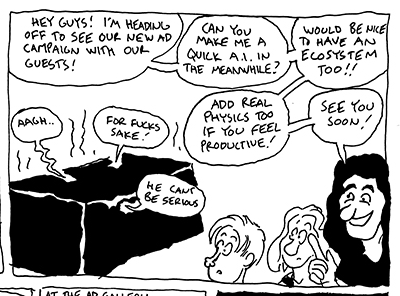
The problem is that it is SUPER EASY to come up with plenty of ideas for belt-scrolling beat em up: Lets have character experience system! Procedural levels! Punches should only hurt based on distance! Combos! Branching storyline! Ecosystem! Shop! etc. We can sort it all together later! Can we…? Yeah, right. Sigh.
This is where I see lot of the amateur game developers (and some experienced ones) fail. This is what I talked about making one thing well rather than having lot of conflicting elements and executing them badly. Because if you just throw things together, you end up with a mess that does not really work, and you can’t easily patch it since once you start “fixing” one area of the design, the other area starts to “leak”. I can use my own game as an example. When I was 16, I wanted to have a beat em up, but I also wanted to have weapons and guns, and I also wanted my character to be really strong. But, there is a problem: if your character is really strong, then what he needs weapons for? And how can enemies pose a challenge for him? Ok, so lets make enemies take more hits. But now when the enemies take more hits, the hero character does not feel powerful any more. OK, so lets add power to weapons. But what’s the point of using punches any more if you can do everything more conveniently with weapons? Hey, lets level up the character then. Now the character has leveled up but enemies are not putting up fight anymore. And now we are back to square one. So adding too many features demands that you have a system where are elements compliment with each other. Do not be like certain AAA studios and just auto-level enemies, you may just as well drop the leveling system for being meaningless progress ladder if you don’t want your game feel like a job where you pay for your work.
So, we need to identify and select the ideas that matter for our game. But, now we have a problem, if we are to do only few things well, how do we choose from all these ideas? How do we know what to emphasize?
The most straightforward way to approach the problem is to look at what you are doing and why in the most objective manner. When ever you select and implement an idea, you always need to know: what are you doing? And why? What is the very essence of what you are doing?
When I was a kid, I was thinking, thankfully, in rather simple manner so it is not difficult here: I wanted to make a game that was like Splatterhouse and Final Fight. On a Commodore 64. However, C64 does not have same technical capabilities as those arcade games do, so many of the attractive features will be lost in translation. The biggest draw of any eventual conversion would be to say: “Hey, LOOK what I can do with C64!”.. and once you got over that stage, that’s it then. All you got is a playable demo with animation on ageing hardware that may be impressive as technical achievement, but as a gameplay experience, that is not much to go with.
So, can we identify anything else worthwhile in the Splatterhouse and Final Fight (and to some extent, Kung Fu Master) that we could use to develop Undead further?
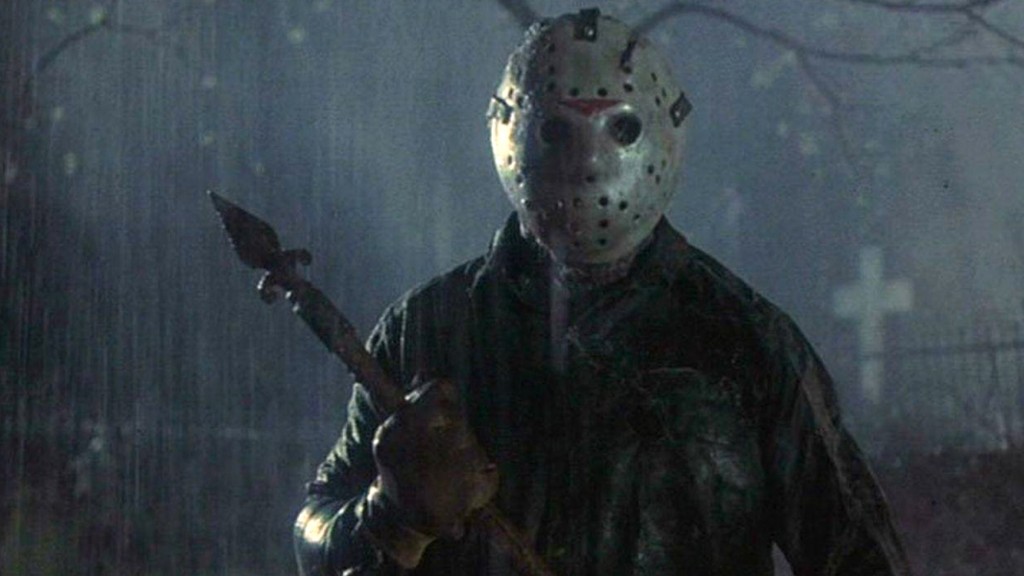
Splatterhouse and Final Fight are essentially produced to cash in on the general public’s excitement over US movies, such as Friday 13th Part VI (Splatterhouse stole most of the visual elements there) and for Final Fight, they used Streets of Fire and Hard Times as inspiration (and Savage Streets, I suspect). That’s the visual inspiration. For the gameplay inspiration, the whole point of Splatterhouse was gore effects. You put quarter in, and in few seconds time you can watch mutilated corpses animating on a floor, and control Jason Vorhees-lookalike, pick up meat cleaver and decapitate zombies. For Final Fight, you could beat up huge crowds and throw them around and feel really powerful. There was also multiplayer co op, and three characters that felt distinct visually and in the gameplay.
That is already combining several elements in the Undead. There is still uncertainty on what to really focus on. Should I be focusing on beat em up, or splatter? Just splatter is fun, but wears thin. If I make it beat em up, are the zombies supposed to punch back? Arent zombies supposed to be slow. Lets analyze this further.
Undead already establishes its identity by its name alone. I want a splatter game with zombies. I also wanted a beat em up. You have elements there that kinda work together but really don’t, so I need to find a way to make them work. Let’s step back and think about the inspiration for zombie games (which now are plenty). Forget walking dead, and step further back. Zombie genre was “invented” by George A. Romero.
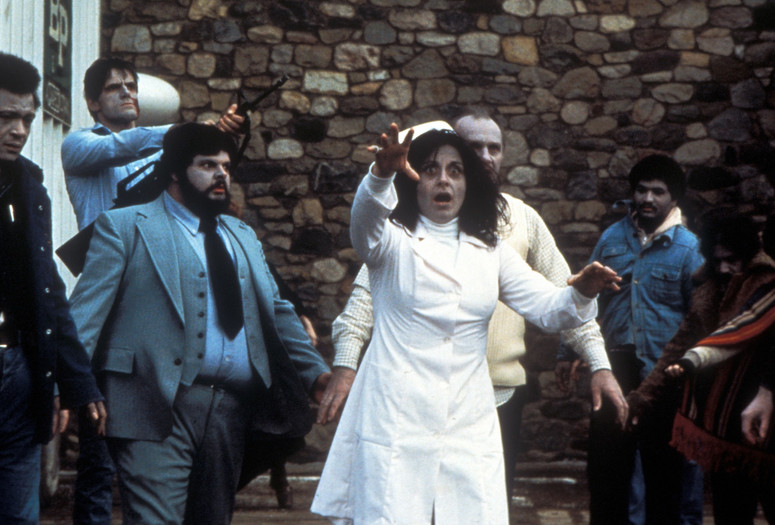
His movie had satirical element to them, which was not lost if you look at zombies strolling around in supermarket in the original Dawn of the Dead. From there you can quickly gather following points:
- Single zombie is hardly dangerous, unless you are incapacitated
- But they can overwhelm you
- Terror often comes from you being alone against massive amount of zombies
This element of invasion was not really invented by Romero, however, there is a predecessor, Richard Matheson’s wonderful book “I am legend”.
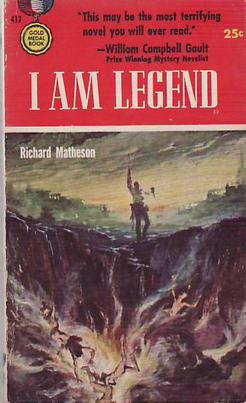
Except, there zombies were vampires. Since vampires slept at day, the protagonist traveled around, killing as many of them as he could. In the night, tables turned, and protagonist was walled inside his home-turned-fortress while vampires were trying to break in, while he was getting drunk on whiskey so he would not go insane from the endless banging and screaming. In the end, everything was subverted when protagonist finds out that vampires have replaced humans in society, and since he is the last human who goes around killing vampires when they sleep, and he himself became mythical beast; thus the name “I am legend”. This was obviously lost on every single movie adaptation but what can you expect from Hollywood? Anyway, this was the source of inspiration for Romero.
Picking social satire is tempting but hardly necessary for a quick and fast arcade game which is not meant to do anything else than provide distraction for 15 minutes. But we have now identified what this whole genre is about, and can make all future decisions from there; this will affect on what we want the game to accomplish, what is the kind of feel we want to communicate on visuals, sound and setting.
This is not a Final Fight, Street Fighter, or Haunted Mansion-style game, neither a shoot em up. We are already starting to identify the basic building blocks that allow me to define the essential gameplay elements.
- Devil is in the details. Always
So, let’s go back on defining the enemies. They are zombies, so they don’t really punch. They will try to grapple and hold you. Do we have any similar gameplay examples? We do, Kung Fu Master. It’s all about timing, don’t get enemy too close or it will take hold of you. Great! We can work with this.

So why do you need punches and kicks for? You can’t knock them out the same way as you could humans, and they don’t hit you back, instead they will try to overwhelm you and eat you.
But punches and kicks can stun them, making an opening for more devastating attack. This is why it’s now useful to have main character as a powerful cyborg. You can have slower, skull-crushing attacks that will kill zombie in one strike, but it takes more time, which makes you more vulnerable to them. The quicker punches are to hold them back, stun them and basically for keeping them away for a moment while you are trying to identify an opening for next big attack. Now we have a system that makes sense: it makes you feel like that the enemy sprites coming at you function like zombies in a Romero movie, without having to add some digitised moan – their behaviour alone identifies them. You can also execute a roundhouse kick by holding down fire and waggling a joystick, this will throw every zombie off you, and it will take time for them to recover. This makes the game system all about timing and execution, and it allows you to build tactics on the spot. Hey, let’s check out how it looks like on the prototype!
What about weapons? Meat Cleaver can kill or should we say, incapacitate, zombie on one strike, but it is slow and won’t work if zombie is too close. But even with meat cleaver, you can still jump kick or duck punch them if they get too personal. So that too plays for timing, and more importantly, gives a tradeoff, which enables us to keep the gameplay balance.
And gun? It will certainly stop a zombie, but only for a while, and it takes time to reload and you will run out of bullets. Since this is a fast paced arcade game, we will not choose to implement any targeting system, instead weapon will do only one thing when fire is pressed, so that in the thick of the action you will know exactly what kind of outcome each choice will give you.
But what about zombies? You can see them walking from miles away, this creates a problem: since this is a 2D arcade game with a straight line to traverse, it will mean that they will just walk slowly into your fists. And that will get really boring and really fast. Lets look at the original movies again and see what we can use. Zombies are somewhat slow and limited in perception, and won’t necessarily notice you unless you get close, and then they start to approach you. They can also sometimes get very agitated, and start running at you (depending on the movie, but I will only consider old Romero movies as canon). So, how we can use this?
Games like Kung Fu Master and Rygar are all about timing. You will have to be able to anticipate when the enemy is in the punching range, if you miss your hit you will be likely to get hit yourself. So, when can make different states to zombies, that will allow us to break too predictable patterns. In Rygar, some of the enemies speed up when they get closer to you. It works. So let’s have zombies first ignore you. Then, when you get closer, they start walking at you. But, once they reach certain distance, they will start charging. Even this can get bit predictable, so let’s add a variable timer that makes 0-3 seconds of difference on when they switch states. This will force the player to stay alert and watch them. Suddenly they game becomes way more exciting, less monotonous, AND, it feels true to the theme and intention. This whole process is the result of identifying what is it that you are working with, and selecting your solutions from what you have identified.
But there is still one problem? Do we need throw any more? How are we going to use it? This is probably not a wrestling game?
Fortunately, a game landed on my lap that provided just right solution: Ninja Warriors for Switch/PS4/Steam. It is a reworking by old Snes title, which itself was a version of old Taito coin-op which was a Kung-Fu Master variant. It first looked like ridiculously simple, even bad game, but playing proved me how humiliatingly wrong I was: Ninja Saviours is an arcade design masterpiece, that has loads and loads of gameplay depth hidden under the surface.

From there I saw that the developer also identified the most obvious thing: games like this are not about statistic, they are about timing, reading the situation and crowd control. Different characters have slightly different playstyles (as they should), but lets just focus on the Ninja. A huge cyborg, you will start playing him just by punching everything that moves, but you will soon be overwhelmed. A typical casual gamer will now stop playing at this point, upset that he is not allowed to win just by mashing buttons, what a travesty for someone who paid money to be entertained. Arcade player will start to experiment and soon find out that you can do lots of damage by throwing enemies around in different ways. The most important point is to use weak enemies as “bowling balls” to keep the nastier enemies away. But, there is more! Game has also invisible skill progression: the more you are able to identify enemy behaviours and their movements, you will be able to spot openings even within the nastier enemies, and find when you can grab them as well and throw them around!
Here we see a major difference between classic japanese arcade design and modern casual game design. Modern game wants you to tap button, while showing you progress bar, telling you: “HERE! LOOK! YOU ARE MAKING PROGRESS!”.. when what you really are doing is just mindlessly bashing a button. The whole “progress” is just meaningless metadata, a screen of smoke and mirrors that fool you into thinking that you have “achieved” something. But in classic arcade game like Ninja Warriors the progress is clear, but instead of the game telling it to you, you identify it yourself and the results are real – you are dancing through stages you thought were impossible just a short while ago. Nothing beats that feeling.
This also explains why I have such discontempt for much of the modern gaming. They are just simply telling you that you are doing something or achieving something, and the audience loves it when they are being told that. This is also why I dislike most of the modern gaming. But it is what it is – there is not much I can do about it.
So, what does that mean for Undead? We can use grab when the zombies are incapacitated. So it will work this way: you punch zombie, when it has been punched, it is stunned. Then you grab it, and throw it, to keep other zombies away. You use all these tools to create yourself openings for more powerful attacks.
And that’s how the gameplay loop for Undead was solved. There are still of course many, many other things and issues with the gameplay, but if you thought that I will give you step – by step – tutorial on how to rip off this game and claim it was all your idea, you are out of luck: you will have to learn to make games by yourself, just copying my methods here won’t do your much good anyway.
- Dead walk.. at the The Unreal prototype
Making the playable prototype before C64 version may sound crazy, but it was the only obvious choice. When you code on C64, you will have to build code on very linear manner. What this means that replacing any game systems or iterating is very slow and time consuming process. Also there is a MASSIVE amount of animation which had not even been tested if it really works within the gameplay, and I was looking to iterate lot of it, as I was not quite sure we had done everything right back in 1990.

I confess something; by the spring of 2023, I had never really coded or scripted much. Then, in summer of 2023, I was contacted by Remedy Entertainment. They wanted to interview me for Game Designer role (it was a fun surprise, since I didn’t apply!). They asked me to do a test, write design document and implement weapon system either on Unity or Unreal. I did not want to reveal that I had no idea how, instead I decided to go crazy and just shoot for it, as it gave me an excuse to try something I had never tried before – scripting/coding with blueprints. I chose Unreal over Unity, because I already had used Unreal in an extensive amount for my own game project (Far End Chronicles) on my own game company. So, I went to look for youtube tutorials for how to implement weapon systems on Unreal. I found them, and quickly learned two things. 1) blueprints in UE are SUPER simple 2) youtube tutorials are AWFUL. After just a few days, I had targeting system, weapon pickup system, and I had to fix lot of awful mess from the tutorial myself – despite having almost no knowledge from blueprint scripting.
I did not get the job, because the document I wrote was not comprehensive enough. I thought that I should not annoy them by wasting their time by making them read obvious things about shotgun features that everyone already knows, so I only wrote about how they could be applied in certain situations. But when you have team of 200+ people, it means that EVERYTHING has to be documented down, even things you imagine that are obvious to everyone in the world. So obviously writing such documents is no job for me. About the prototype I implemented on UE they had nothing to complain, which I found hilarious, considering how awful my code was. But this gave me confidence to start making prototype for Undead on my own.
So, let’s address this in public: Thank you, Remedy Entertainment, for pushing me towards a path that I would not have gone otherwise, because I did not have enough confidence in my abilities. This has been a biggest service ANY game studio has done me EVER in my career – even if it wasn’t your intention. So, really, thanks! 🙂
I obviously did not want to follow any youtube tutorials any more, since they are mostly AWFUL, just like 90% of everything else that was in youtube. So, I bought myself some Udemy courses, which were very helpful. Only thing that has been a constant surprise and shock to me is how easy it is. The only difficulties I really have had is that Unreal is not REALLY a 2D engine, development is enabled by a plugin called PaperZD, and everything I implement must dance around to it’s specifications and it limits, which sometimes causes me issues and delays.
But, I am making the prototype, and Pekka will read the game logic from the prototype when making his conversion to C64. We also had to implement an export pipeline from Necromancer to Unreal Engine, which took some effort and testing. During the process, I found out why hand-drawn 2D games don’t often have separate weapon sprites added to different moves. Matching them to animation frames can be difficult and lot of work. Fortunately, our Necromancer editor is reasonably equipped to handle this.
So, what happens next? I am busy with freelance work during weekdays, but I am continuing to develop the prototype on the weekends or when I have time. I have just implemented the weapon system and I am currently working on death animations for the weapon system. I still need to implement the grab/throw system so that it works. We have a project plan with Pekka on how to proceed so that we will have a playable demo ready for the Zoo Party 2024, where we are hoping to show it a little bit, and we know what needs to be done to make it happen. Life can of course intervene at any time, but we are still working on this.
Sorry for such a long blog post, but I rather write a long post once a year than many short ones. Some challenge for todays ADHD audience.
Oh, and here’s a concept image that I made for Undead. I wanted to go back to the way I used to draw concept images back in 1990- by pen and paper!

Until next time!
